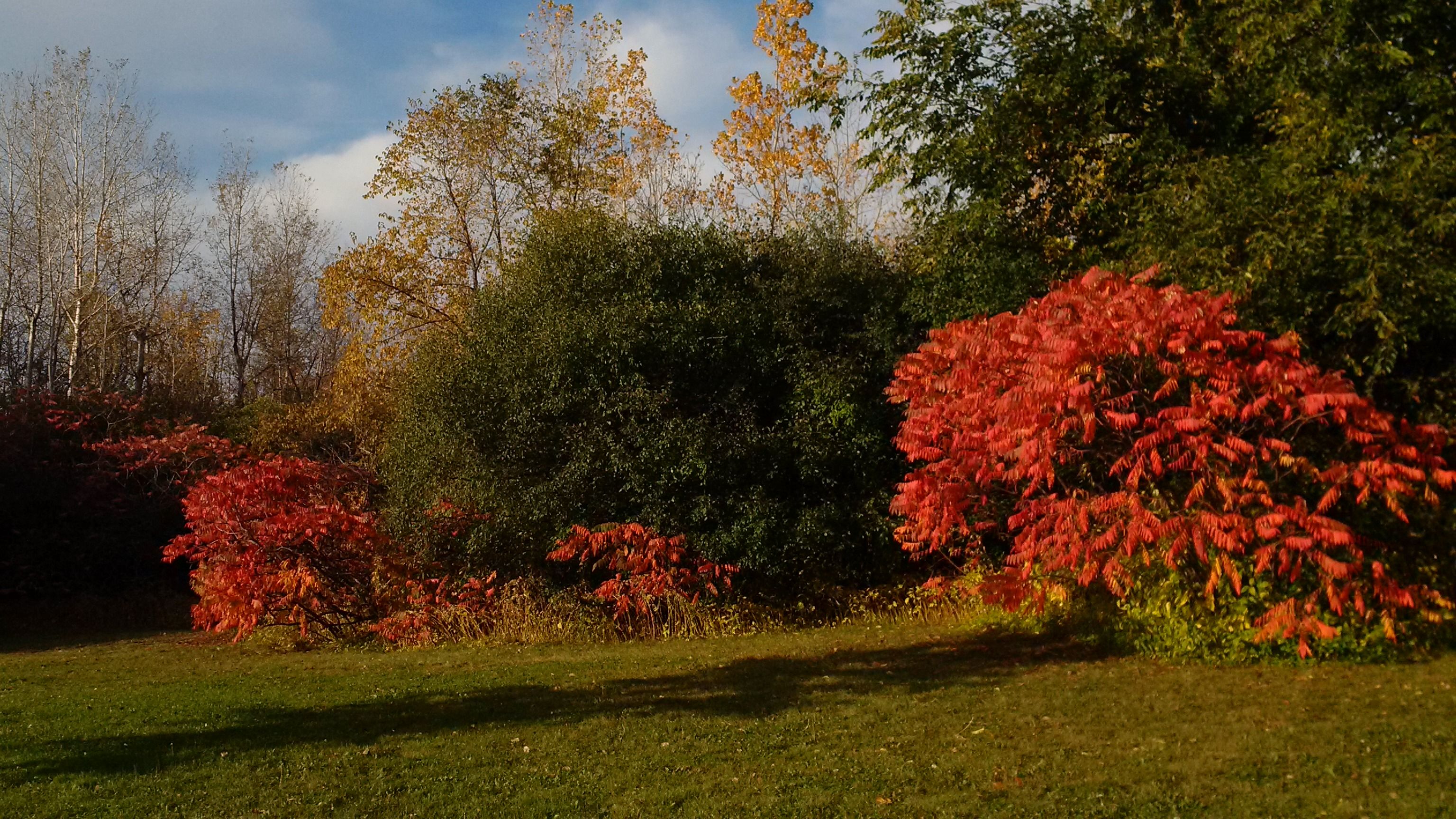
The Staghorn Sumac are ablaze in color .... The Landscape is putting on a grand show these days.
More... http://cwf-fcf.org/en/resources/encyclopedias/flora/staghorn-sumac.html
This large shrub has compound leaves, meaning each leaf is composed of several leaflets. Eleven to 31 leaflets are arranged in opposite pairs along a stalk which grows 30 to 50 centimetres long. These leaflets hang down, have serrations (teeth) along the edges and turn a radiant red or orange in the fall. The thick branches are hairy and resemble the velvety antlers of a male deer (stag), hence the common name of “staghorn.” Clusters of small greenish flowers form an upright cone that yields crimson red berries covered in fine hairs, beautiful against a blanket of snow.
Sumacs send up shoots that are easy to cut back if unwanted. But if allowed to spread, clumps of sumacs will develop a remarkable shape like a single domed canopy above several trunks. Staghorn sumacs grow to three to six metres tall.
The leaves of the staghorn resemble those of the poison sumac belonging to the Toxicodendron genus and found in pockets of southern Ontario and Quebec in wet places. But poison sumac leaves tend to be shorter and wider with no serrations along the margin. Interestingly enough, this is the same genus that contains poison ivy and poison oak, a couple of low-growing plants with leaves of three that are potential skin irritants (hence their genus name derived from the Greek toxicon (poison) and dendron (tree). These three species used to be included in the genus Rhus, but were later put in a genus of their own because of certain differences, such as having smooth white berries instead of furry red ones.
Nice post...👍😉
Downvoting a post can decrease pending rewards and make it less visible. Common reasons:
Submit